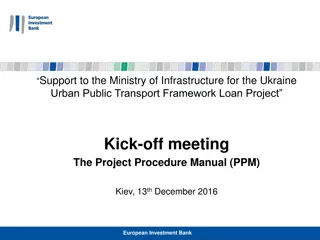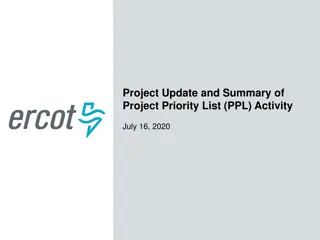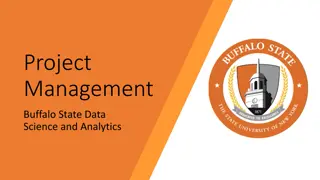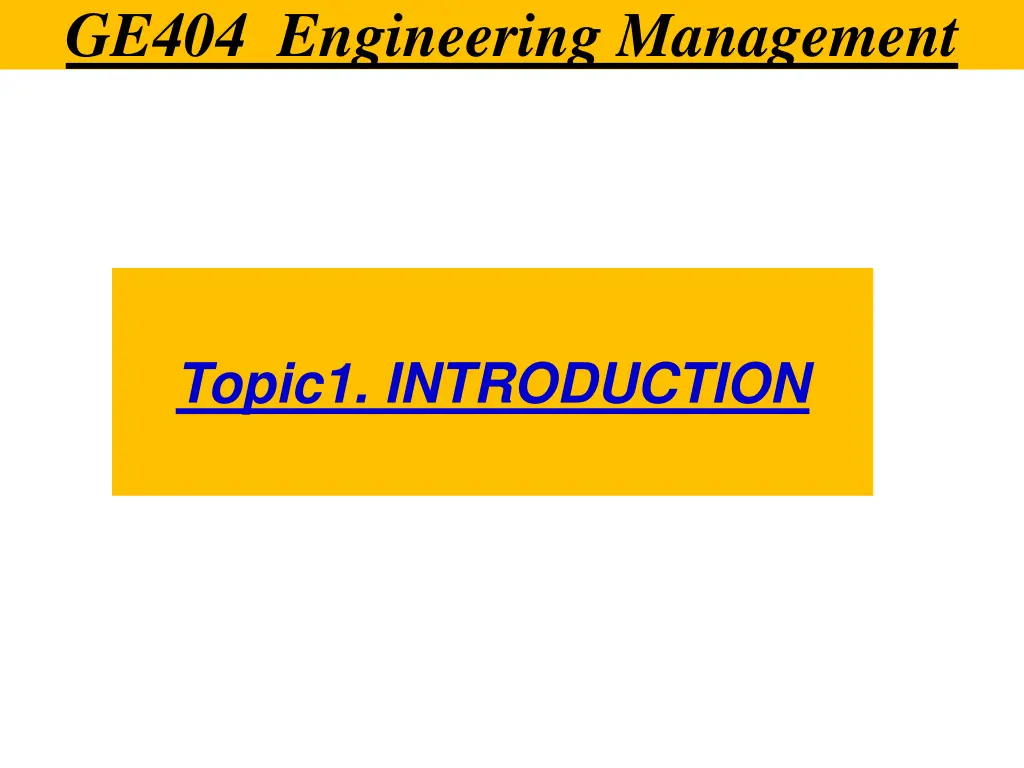
Engineering Management: Project Management Fundamentals and Techniques
Gain insights into project management objectives, planning processes, scheduling techniques, resource allocation, and financial management in engineering projects. Learn to apply tools like Gantt charts, network scheduling models, and time-cost trade-offs effectively.
Download Presentation

Please find below an Image/Link to download the presentation.
The content on the website is provided AS IS for your information and personal use only. It may not be sold, licensed, or shared on other websites without obtaining consent from the author. If you encounter any issues during the download, it is possible that the publisher has removed the file from their server.
You are allowed to download the files provided on this website for personal or commercial use, subject to the condition that they are used lawfully. All files are the property of their respective owners.
The content on the website is provided AS IS for your information and personal use only. It may not be sold, licensed, or shared on other websites without obtaining consent from the author.
E N D
Presentation Transcript
GE404 Engineering Management Topic1. INTRODUCTION
GE404 Course Topics Covered 1) Introduction Introduction for project management objectives. Project Participants and Project Life Cycle. 2) Contractual and organizational approaches 3) Projects Planning Processes, andBar (Gantt) Chart 4) Network Model Scheduling using activity-on-node, precedence methods and time Scaled. 5) Resource leveling and allocation. 6) Project time-cost trade-off. 7) Financial Management: Cashflow Forecasting 8) Project time and cost control 9) Analysis of Scheduling Delay
GE404 Course Learning Objectives Students completing this course successfully will be able to: a) Using bar chart technique to formulate a complete plan for a project. b) Apply activity-on-node network, and precedence diagram to schedule a project. c) Level and allocate project resources. d) Shorten project duration. e) Monitor an engineering project for purpose of time and cost control. f) Use computer software for preparing project schedules g) Understand principles of project organization and contractual relationships including definition of professional responsibilities of project participants.
GE404 Textbook(s) and/or Other Required Material 1) Project Management with CPM, PERT, and Precedence Diagramming, 3rd Edition, by Moder J., Phillips, C., and Davis, E. 2) Construction Planning and Scheduling (4th Edition) by Jimmie W. Hinze, February 28, 2011 3) Course lectures are also found on the following website: http://faculty.ksu.edu.sa/algahtani & LMS (Blackboard)
GE404 Grade Distribution Mid-term Exams 40 % Assignments and Quizzes 10 % Final Examination 50 %
What is a Project? A Project is : a temporary endeavor undertaken to create a unique product or service or result. (PMI) a one-shot, time-limited, goal-directed, major undertaking requiring the commitment of varied skills and resources. (PMI) A Combination of human and non-human resources pooled together to achieve a specific purpose and deliverables.
Project Characteristics Temporary (start, end, project team) Unique (Product, Service or Result) Completed (objectives, acceptance& Satisfaction) Progressive Elaboration Project variables and parameters (nature, size, budget, resources, complexity) Project Categories (small, medium, large) Source (PMI,2004)
Project Examples Construction projects of various types as: Building projects (Residential as non residential), and Construction projects (dams, tunnels, and bridges, power plants and refineries) Engineering Projects: Product Development, Engineering, Industrial Engineering, technology, production, or any other field that employs personnel who perform an engineering function. Manufacturing, \construction, Design Research and development projects such as the Stealth fighter plan. Software Development projects such as the university registration computer program.
What is Management? Management is a process concerned with the attainment of objectives. Levels of Management Top Middle Project Management Low Figure below shows the involvement % of the different levels of management for: (Planning vs. controlling) (conceptual vs. technical) Planning Control Conceptual Technical Top Middle Low Management Management Management
Management Functions Planning What are we aiming for and why? Organizing What s involved and why? Motivation What motivates people to do their best work? Directing Who decides what and when? Control Who judges results and by what standards?
Planning What are we aiming for and why? Develop project objectives, goals, and strategies. Develop project work breakdown structure. Develop precedence diagrams to establish logical relationship of project activities and milestones. Develop time-based schedule for the project based on the time precedence diagram. Plan for the resource support of the project.
Organizing What is involved and why? Establish organizational structure for the team. Identify and assign project roles to members of the project team. Define project management policies, procedures, and techniques. Prepare project management charter and other delegation instruments. Establish standards for authority, responsibility and accountability of the project team.
Motivation What motivates people to do their best work? Determine project team member needs. Assess factors that motivate people to do their best work. Provide appropriate counseling and mentoring as required. Establish rewards program for project team members. Conduct initial study of impact of motivation on productivity.
Directing Who decides what and when? Establish limits of authority for decision making for the allocation of project resources. Develop leadership style. Enhance interpersonal skills. Prepare plan for increasing participative management techniques in managing the project team. Develop consensus decision making techniques for the project team.
Control Who judges results and by what standards? Establish cost, schedule, and technique performance standards for project. Prepare plans for means to evaluate project progress. Establish a project management information system for the project. Prepare project review strategy. Evaluate project progress.
What is Project Management? Project Management is defined as the application of knowledge, skills, tools, and techniques (as optimization) to project activities to meet project requirements (scheduling and resourcing). (PMI, 2004) involves planning, Project organizing, staffing, directing, and controlling to achieve an objective with constraints on Time Cost Performance of the end product Management
Project Management main Function Activities Scheduling Project activities Start & end times Network Planning Objectives Resources Work break- down schedule Organization Controlling Monitor, compare, revise, action
Project Management main Function Activities Time/cost estimates Budgets Engineering diagrams Cash flow charts Material availability details Budgets Delayed activities report Slack activities report CPM/PERT Gantt charts Milestone charts Cash flow schedules Before project Start of project Timeline During project Figure 3.1 (from Heizer/Render Operation Management
Project Stakeholders Project sponsor Project Owner Project manager Customer/user Functional managers Performing organization Project team members Project management team Internal and external contractors, suppliers and vendors Government agencies and media
Project Common Resources The main resources are (3M) Manpower (People) Money Materials And Machines.
Project Objective Key Factors The objective Key factors affecting and varying the project are: Scope Cost Time, and Quality (affected by balancing the above three factors) Scope Good Will Quality Safety Cost Time
Assessing Project Success Within Schedule Within Budget Meeting Spec requirements With minimal or agreed upon scope changes Without disturbing workflow of organization o Acceptance by customer and or user o Customer Satisfaction Without negatively affecting corporate culture



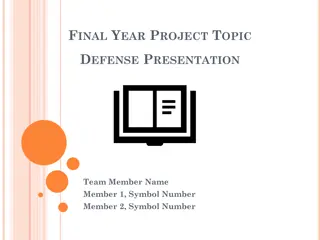


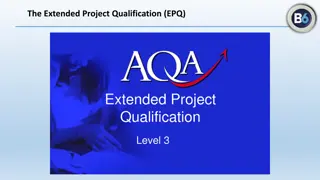
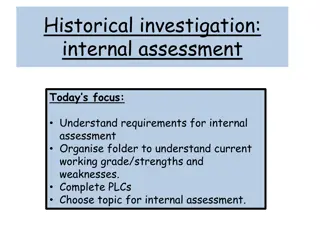

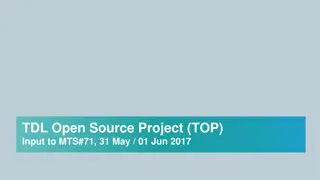
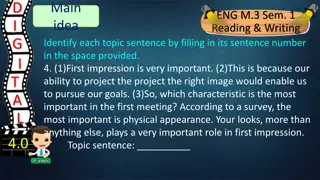


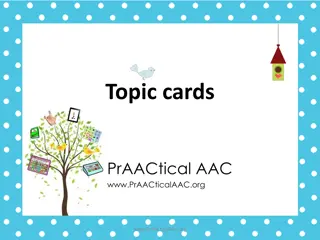

![Project Initiation Document for [Insert.Project.name] [Insert.Project.number]](/thumb/226757/project-initiation-document-for-insert-project-name-insert-project-number.jpg)

